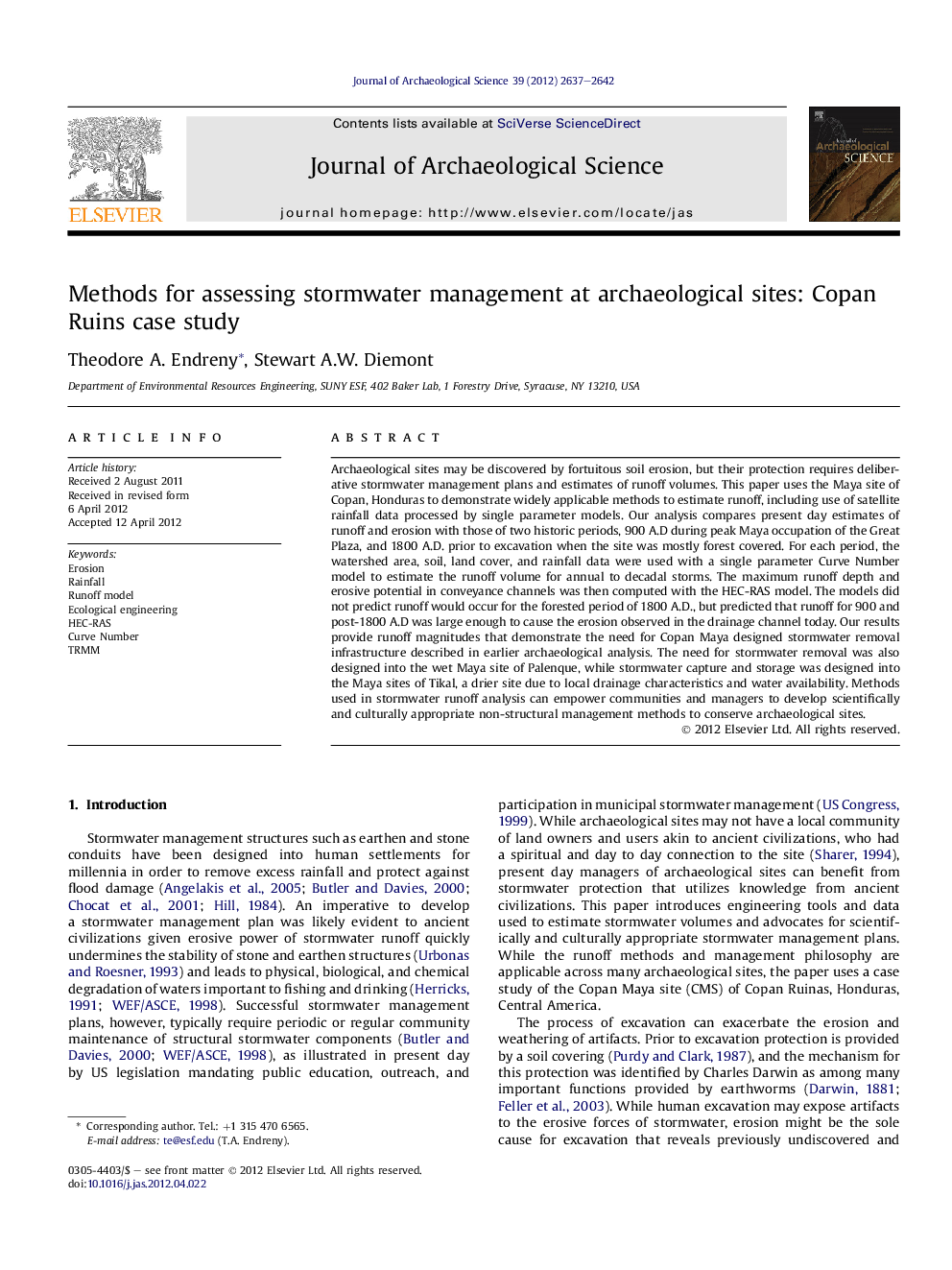| Article ID | Journal | Published Year | Pages | File Type |
|---|---|---|---|---|
| 1035617 | Journal of Archaeological Science | 2012 | 6 Pages |
Archaeological sites may be discovered by fortuitous soil erosion, but their protection requires deliberative stormwater management plans and estimates of runoff volumes. This paper uses the Maya site of Copan, Honduras to demonstrate widely applicable methods to estimate runoff, including use of satellite rainfall data processed by single parameter models. Our analysis compares present day estimates of runoff and erosion with those of two historic periods, 900 A.D during peak Maya occupation of the Great Plaza, and 1800 A.D. prior to excavation when the site was mostly forest covered. For each period, the watershed area, soil, land cover, and rainfall data were used with a single parameter Curve Number model to estimate the runoff volume for annual to decadal storms. The maximum runoff depth and erosive potential in conveyance channels was then computed with the HEC-RAS model. The models did not predict runoff would occur for the forested period of 1800 A.D., but predicted that runoff for 900 and post-1800 A.D was large enough to cause the erosion observed in the drainage channel today. Our results provide runoff magnitudes that demonstrate the need for Copan Maya designed stormwater removal infrastructure described in earlier archaeological analysis. The need for stormwater removal was also designed into the wet Maya site of Palenque, while stormwater capture and storage was designed into the Maya sites of Tikal, a drier site due to local drainage characteristics and water availability. Methods used in stormwater runoff analysis can empower communities and managers to develop scientifically and culturally appropriate non-structural management methods to conserve archaeological sites.
Graphical AbstractFigure optionsDownload full-size imageDownload high-quality image (101 K)Download as PowerPoint slideHighlights► Unmanaged stormwater can erode soil and damage an archaeological site and artifacts. ► We present runoff analysis and stormwater management steps useful in remote sites. ► We use ecological engineering to identify a stormwater plan for Copan Maya site.
